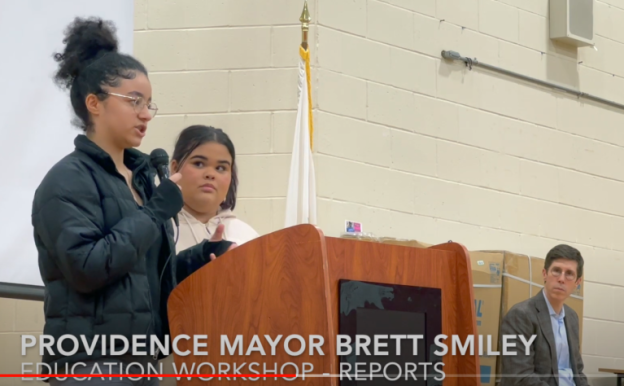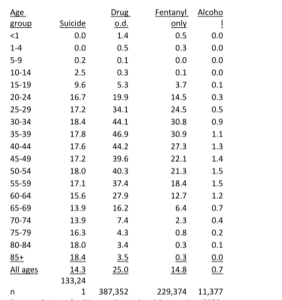Why does anyone pay attention to Jonathan Haidt?
By Mike Males | January 2023
The tiresome trashing of younger generations has gone on at least since Greek poet Hesiod
berated 700 BC’s “reckless” and “frivolous… youth of today” for endangering “the future of our
people.” No one has said anything new in the 2,700 years since.
Example: Jonathan Haidt, who should be a national laughingstock. Instead, the New York
University business professor is splashed across major media for quips trashing Generation-Z
youth as social-media “weakened” employees, intolerant, shallow students, and an “entire
generation that’s doing terribly” that endangers the future of America’s economy.
Haidt ushered in the New Year by charging Gen-Z students and workers with lacking creativity
and future orientation. Those criticisms better describe Haidt’s The Coddling of the American
Mind, a repackaging of philosopher Allan Bloom’s The Closing of the American Mind 30 years
ago.
Any young people who actually believe Haidt and his fellow youth-bashers should look back at
what their elders said about them. Inevitably, it is identical to what anti-youth demagogues say
today. Dime novels, jazz music, horror comics, TV, rock lyrics, video games, rap, social media,
cellphones… decades of hand-wringings differ only in what superficial contemporality they
blame for destroying “today’s youth.”
Elders of the 1930s bitterly trashed their youth (which we now call “the Greatest Generation”)
as mentally disturbed, aimless, and jeopardizing America’s future. Then, 1930s youth, aged into
1980s elders, trashed Gen-X youth as mentally disturbed, pop-culture-warped, and jeopardizing
America’s future. Now, 1980s youth, aged into 2020s elders, berate Gen-Z youth as mentally
disturbed, social-media-warped, and jeopardizing Americas future.
By objective standards, today’s Gen-Z youth are a vast improvement over Haidt’s own
Generation-X youth and young adults of the late 1970s and early 1980s, about whom youth-
bashers hurled exactly the same epithets Haidt now vents against Gen-Z.
The Department of Education’s alarm-clanging “A Nation at Risk” report in 1983 denounced
Gen-X’s “mediocre educational performance” a dire threat to America’s global survival akin to
“an act of war.” Bloom famously condemned Haidt’s 1980s college generation as lazy,
intolerant, unemployable, and suffering “impoverished souls.” Psychological reports brimmed
with panics over the “305% increase … in teen suicide” Haidt’s generation brought. Senate
wives led by Tipper Gore blamed rock music and cultural depravities for driving young-age
mental health crises and violence. Haidt’s Gen-X youth had criminal arrest rates a shocking
350% higher, including vastly more violent and property crimes, than today’s Gen-Z.
Haidt’s generation got even worse with aging. Today, Haidt’s fifty-agers suffer far higher levels
of drug abuse, binge drinking, suicide, and self-destructive deaths than Gen-Z teens and young
adults. In California, harbinger of national trends, criminal arrests of adults ages 50-59 now
greatly exceed those of teenagers – a stunning reversal of past patterns.
Younger Millennials and Gen-Z youth (no thanks to their elders) have spent decades bringing
down high rates of dropout, crime, violence, homicide, early pregnancy, and related anti-social
behaviors that Haidt’s generation inflicted then and is still inflicting now.
Yet, the youth-bashings continue.
Why are Haidt and his media adorers taken seriously? Are the same-old ego-driven shallowness
and slanderings of the young really seen as profound insights by the likes of Atlantic Magazine,
The New Yorker, TED-talk recruiters, and scores of media hosts?
Putting aside the baseless quips, anecdotes, and mass stereotypes Haidt and other youth-
bashers deploy, the main indictment of Gen-Z centers on surveys showing more depression and anxiety among teenagers. However, wise observers would consider serious contexts before
rushing to declare Gen-Z in “mental health crisis.”
Today’s teens are being raised by the most troubled grownup generation – as measured by
criminal arrests, suicide, drug and alcohol overdose, gun killings, depression, and political
craziness – in documentable history. Sharply increased numbers of youth reported on the same
survey experiencing psychological and physical abuses by parents, including being sworn at,
kicked, hit, and physically hurt. Yet, commentaries ignored whether teens’ depression and
anxiety are natural, normal responses to skyrocketing abuses and harsher conditions inflicted
by grownups.
Unfortunately, the misuse of surveys enables Haidt and other youth-bashers to dodge serious
issues and to manufacture images that teen problems are caused merely by gadgets, social
media, and their own weaknesses. It’s time – about 3,000 years past time – to stop lionizing
self-stroking by quip-happy youth-bashers. At least, until one says something that’s actually
new and true.
For a longer version of this column with more players, see, Mike Males, “Enough Youth
Bashing,” LA Progressive, https://www.laprogressive.com/law-and-the-justice-system/enough-youth-bashing




